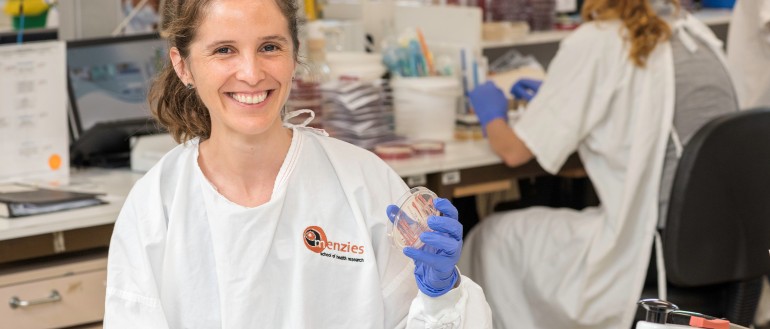Genomic sequencing transforming infectious disease surveillance
The Top End of Australia has unique environmental bacteria that can cause severe human disease. Acinetobacter, is a good example: although it is best known globally as a multidrug-resistant hospital pathogen, it presents differently in the Top End as a nasty form of pneumonia acquired in the community.
Until now, the geographic origin of this environmental bacterium, why it causes such severe disease, and whether repeat episodes are a result of relapse or reinfection were not known.
Now using whole-genome sequencing, Menzies PhD student, Dr Ella Meumann, has been able to address these questions. Genomic sequencing is faster and cheaper than ever before and has the potential to transform infectious disease surveillance, epidemiologic investigation and outbreak detection. Expansion of genomics capacity in northern Australia and in our region is critical, and Menzies has the potential to be at the forefront.
The research team found that some NT Acinetobacter strains were closely related to overseas hospital strains and that they were genetically diverse. The genetic make-up of the bacteria did not correlate with disease severity. Additionally, approximately 10 per cent of surviving patients had recurrence, and these were new infections not relapses.
The findings highlighted that host risk factors, particularly hazardous alcohol consumption, were more important than bacterial factors in explaining the severity of this disease. In the next stages of her PhD, Ella plans to apply her genomics skills to TB and melioidosis in the Top End. Ultimately she aims to work with pathology providers and public health units in the implementation of genomics for public health surveillance.

